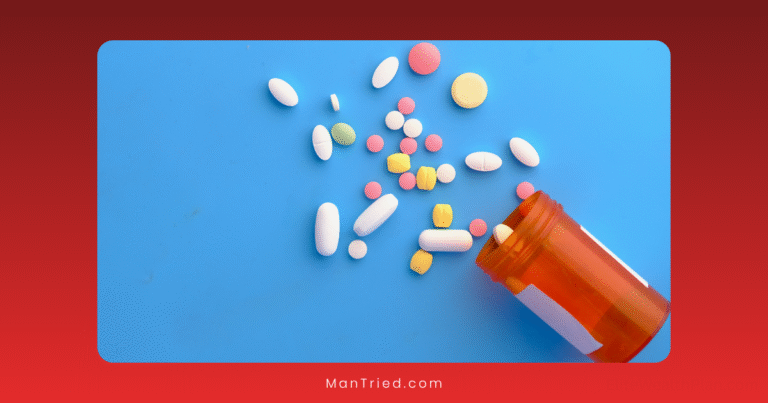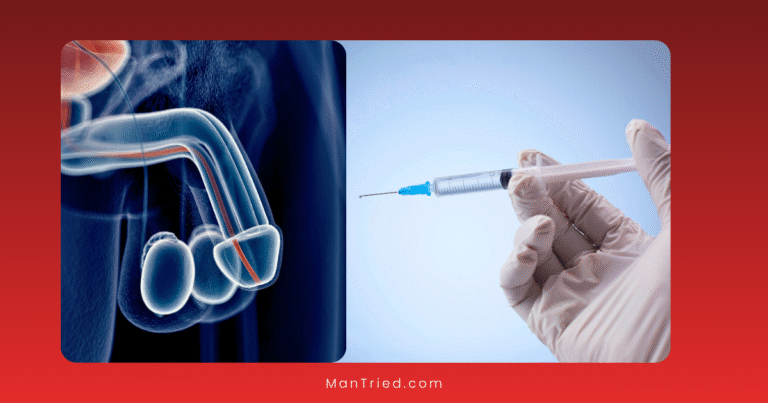TRT in 2025: New Delivery Methods and Monitoring Protocols

Testosterone replacement therapy (TRT) has undergone a remarkable evolution in recent years, with 2025 marking a watershed moment in how this vital treatment is delivered, monitored, and personalized. With hypogonadism affecting nearly 40% of men aged 45 and older, the demand for more effective, convenient, and precisely tailored TRT options has driven significant innovation.
This comprehensive guide explores the cutting-edge delivery methods and monitoring protocols that are transforming testosterone therapy in 2025, empowering men and their healthcare providers with more options than ever before.
The Changing Landscape of TRT
Before diving into specific innovations, it’s worth understanding the context of TRT in 2025:
Current Statistics and Trends
- TRT usage has tripled in the U.S. over the past two decades, with 2.3 million American men receiving treatment as of recent data
- The TRT market reached $2.07 billion in 2024 and is projected to grow to $2.24 billion by 2029
- Approximately 13 million men in the U.S. suffer from low testosterone, equating to 1 in 4 males over age 30
- Testosterone levels in American men have been declining at roughly 1% per year
Evolving Treatment Philosophy
The approach to TRT has shifted significantly in 2025, with several important developments:
- Personalization: Treatment plans are increasingly tailored to individual needs, genetics, and lifestyle factors
- Holistic integration: TRT is now commonly part of broader men’s health programs that include nutrition, fitness, and stress management
- FDA guidance updates: The FDA has removed the blanket cardiovascular risk warning from testosterone products, replacing it with specific monitoring recommendations
- Evidence-based protocols: The TRAVERSE trial found no overall increase in major adverse cardiovascular events with TRT, reshaping risk assessment
Revolutionary Delivery Methods in 2025
The most dramatic innovations in TRT have come in the form of new and improved delivery systems:
1. Advanced Injectable Formulations
Traditional intramuscular injections have been transformed with several key innovations:
Subcutaneous Microdosing
- How it works: Smaller, more frequent doses delivered just under the skin rather than into muscle
- Benefits: More stable testosterone levels with fewer peaks and troughs
- Administration: Typically 2-3 times weekly using smaller needles (27-30 gauge)
- Ideal for: Men who want to avoid the “roller coaster” effect of traditional injections
- Clinical outcomes: Studies show reduced hematocrit elevation and estrogen conversion compared to traditional protocols
Extended-Release Injectables
- How it works: Special formulations that release testosterone more gradually
- Administration frequency: Every 2-4 weeks depending on the specific formulation
- Benefits: Fewer injections required while maintaining more consistent levels
- Considerations: May still have some level fluctuation compared to microdosing
2. Next-Generation Topical Applications
Transdermal options have seen significant improvements to address historical limitations:
Advanced Gel Formulations
- Key innovations: Enhanced absorption technology with reduced transfer risk
- Application sites: Now include not just shoulders and upper arms but also specific areas with thinner skin for better absorption
- Dosing precision: New applicators deliver more consistent amounts
- Transfer protection: Novel formulations that dry more quickly and create a barrier to prevent transfer to partners or children
Nanotechnology-Enhanced Creams
- How it works: Uses nanoparticles to enhance testosterone penetration through the skin
- Benefits: Higher bioavailability with lower applied volumes
- Absorption rate: Up to 35% improved absorption compared to traditional gels
- Application frequency: Once daily, typically in the morning
3. Oral Testosterone Breakthroughs
Oral testosterone has historically been problematic due to liver concerns, but new formulations have overcome these limitations:
Lymphatic Pathway Absorption
- Key innovation: Kyzatrex (testosterone undecanoate) utilizes the lymphatic system to bypass first-pass liver metabolism
- Bioavailability: Approximately 90% compared to just 3-5% with older oral formulations
- Dosing: Typically twice daily with meals
- Efficacy: Maintains serum testosterone within normal range (300-1000 ng/dL) in over 87% of patients
- Safety profile: Significantly reduced hepatotoxicity risk compared to older oral testosterone
4. Advanced Implantable Technologies
Implantable testosterone has evolved dramatically from the basic pellets of previous years:
Miniaturized Subcutaneous Pellets
- Size reduction: Up to 30% smaller than previous generations
- Insertion procedure: Minimally invasive with faster recovery
- Duration: 3-6 months of steady testosterone release
- Release kinetics: Modified to provide more consistent hormone levels throughout the treatment period
Biodegradable Long-Term Implants
- Key innovation: Fully biodegradable materials eliminate the need for removal
- Duration: 6-12 months per implant
- Composition: Biocompatible polymers that gradually dissolve as testosterone is released
- Ideal for: Men seeking long-term treatment with minimal maintenance
5. Cutting-Edge Delivery Systems
Several truly innovative delivery methods have emerged in 2025:
Smart Programmable Pumps
- How it works: Subcutaneous pumps that deliver micro-doses of testosterone according to programmed schedules
- Customization: Can mimic natural circadian rhythm of testosterone production
- Monitoring: Integrated with smartphone apps for real-time tracking
- Advantages: Unprecedented control over hormone levels throughout the day
Buccal and Sublingual Systems
- Application: Applied to the gum line or under the tongue
- Absorption: Rapid uptake through the oral mucosa, bypassing the digestive system
- Convenience: Discreet application without needles or topical transfer concerns
- Duration: Typically applied twice daily
Nasal Delivery Systems
- Administration: Nasal gel or spray applied inside the nostrils
- Benefits: Rapid absorption and minimal impact on fertility
- Dosing frequency: 2-3 times daily
- Ideal for: Men concerned about preserving fertility while on TRT
Advanced Monitoring Protocols for 2025
As delivery methods have evolved, so too have the protocols for monitoring TRT safety and efficacy:
Comprehensive Baseline Testing
Modern TRT protocols now recommend a more thorough initial assessment:
Essential Baseline Tests
- Total testosterone (morning samples, preferably before 10 AM)
- Free testosterone
- Sex hormone-binding globulin (SHBG)
- Complete blood count with hematocrit
- Comprehensive metabolic panel
- Lipid profile
- Prostate-specific antigen (PSA) for men over 40
- Estradiol levels
- Luteinizing hormone (LH) and follicle-stimulating hormone (FSH)
Advanced Baseline Assessments
- Genetic testing for polymorphisms affecting testosterone metabolism
- Body composition analysis (DEXA scan)
- Cardiovascular risk assessment
- Sleep quality evaluation
- Cognitive and mood assessments
Personalized Follow-Up Schedules
Monitoring frequency has become more tailored to individual risk factors and delivery methods:
Standard Follow-Up Timeline
- Initial follow-up: 6-8 weeks after starting therapy
- Second follow-up: 3 months after starting
- Subsequent monitoring: Every 3-6 months once stable
- Annual comprehensive evaluation
Risk-Based Monitoring Adjustments
- Hematocrit concerns: More frequent CBC testing (every 8-12 weeks)
- Cardiovascular risk factors: Additional blood pressure monitoring and lipid testing
- Prostate concerns: More frequent PSA testing and digital rectal exams
- Delivery method considerations: Injectable methods typically require more frequent hematocrit monitoring than transdermal options
Digital Monitoring Integration
Technology has transformed how TRT is monitored in 2025:
Telehealth Platforms
- Virtual follow-up visits for convenience
- Remote monitoring of lab results
- Medication adherence tracking
- Side effect reporting through dedicated apps
Wearable Integration
- Continuous monitoring of relevant biomarkers
- Sleep quality tracking
- Activity and recovery metrics
- Integration with TRT management platforms
Biomarker Innovations
New biomarkers are providing more nuanced insights into TRT effectiveness:
Beyond Testosterone Levels
- Inflammatory markers (hs-CRP, IL-6)
- Metabolic health indicators (HbA1c, insulin sensitivity)
- Bone health markers (P1NP, CTX)
- Cognitive function biomarkers
- Sexual function metrics beyond subjective reporting
Personalized Approaches to TRT in 2025
Perhaps the most significant advancement in TRT is the move toward highly individualized treatment plans:
Genetic-Guided Therapy
- Pharmacogenetic testing: Identifies how individuals metabolize testosterone
- Polymorphism analysis: Determines optimal delivery method and dosing
- Risk stratification: Identifies patients at higher risk for specific side effects
- Response prediction: Helps predict which patients will respond best to which treatments
Combination Approaches
Modern TRT often incorporates complementary treatments:
Adjunctive Therapies
- Selective estrogen receptor modulators (SERMs): For men concerned about fertility
- Aromatase inhibitors: Carefully dosed to manage estrogen conversion in select patients
- Human chorionic gonadotropin (hCG): To maintain testicular function and size
- Peptide therapies: To enhance natural testosterone production and overall vitality
Lifestyle Integration
TRT in 2025 is typically part of a comprehensive approach:
Holistic TRT Programs
- Nutritional guidance specific to hormonal health
- Exercise protocols designed to maximize TRT benefits
- Stress management techniques
- Sleep optimization strategies
- Regular body composition monitoring
Safety Considerations and Side Effect Management
With advanced delivery methods come refined approaches to managing potential side effects:
Cardiovascular Monitoring
- Regular blood pressure checks (in-office and home monitoring)
- Lipid profile assessment every 6-12 months
- Advanced cardiovascular risk assessment for high-risk patients
- Adjustment of delivery method based on cardiovascular response
Hematological Management
- Hematocrit thresholds: U.S. guidelines now use 50% as the upper limit, while European guidelines use 54%
- Therapeutic phlebotomy protocols for elevated hematocrit
- Delivery method adjustments to minimize hematocrit elevation
- Hydration strategies to manage hematocrit levels
Fertility Preservation
- Sperm banking before beginning long-term TRT
- Concurrent hCG therapy to maintain testicular function
- Consideration of Clomiphene citrate or enclomiphene for men prioritizing fertility
- Intranasal testosterone has been shown to increase testosterone levels while largely preserving semen parameters
The Future of TRT: What’s on the Horizon
Looking beyond 2025, several exciting developments are in various stages of research and development:
Emerging Technologies
- Closed-loop delivery systems: Implantable devices that monitor testosterone levels and adjust dosing automatically
- Gene therapy approaches: Targeting the genetic causes of hypogonadism
- 3D-printed implants: Customized to individual patient anatomy and release requirements
- Stem cell therapies: Aiming to regenerate testicular function
Regulatory and Access Developments
- Expanded insurance coverage for various TRT delivery methods
- Streamlined telehealth protocols for ongoing monitoring
- Increased availability of compounded formulations for personalized dosing
- Greater integration of TRT into primary care settings
Making Informed Decisions About TRT in 2025
With so many options available, how should men and their healthcare providers approach TRT decisions?
Key Considerations for Delivery Method Selection
- Lifestyle factors: Activity level, daily routine, travel frequency
- Treatment goals: Sexual function, body composition, energy, mood
- Risk profile: Cardiovascular status, prostate health, fertility concerns
- Personal preferences: Comfort with self-injection, daily application requirements
- Cost and insurance coverage: Varies significantly between delivery methods
Questions to Ask Your Healthcare Provider
- What is my free testosterone level, not just total testosterone?
- Which delivery method best suits my specific situation and why?
- What monitoring protocol do you recommend for my specific risk factors?
- How will we measure success beyond just testosterone numbers?
- What complementary approaches should I consider alongside TRT?
The Bottom Line
Testosterone replacement therapy in 2025 bears little resemblance to the limited options available just a decade ago. Today’s patients benefit from unprecedented choice in delivery methods, sophisticated monitoring protocols, and truly personalized approaches to treatment.
The ideal TRT regimen is one that fits seamlessly into your lifestyle, effectively addresses your symptoms, minimizes side effects, and is supported by appropriate monitoring. With the innovations now available, more men than ever can find a TRT approach that meets these criteria.
Whether you’re considering TRT for the first time or looking to optimize your current regimen, the advancements of 2025 offer new possibilities for achieving hormonal health with greater precision, convenience, and safety than ever before.
Have you experienced any of these newer TRT delivery methods? Share your experiences in the comments below.






